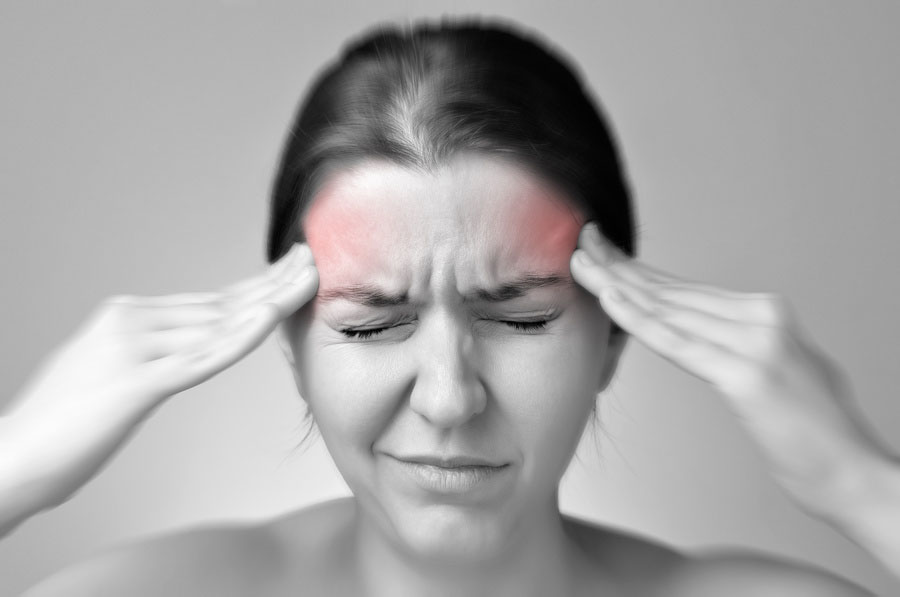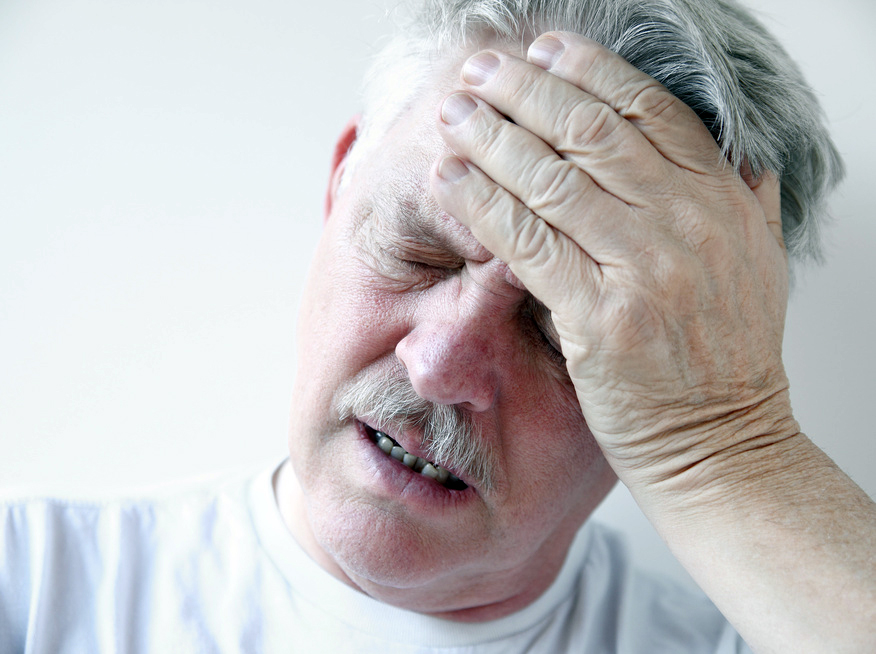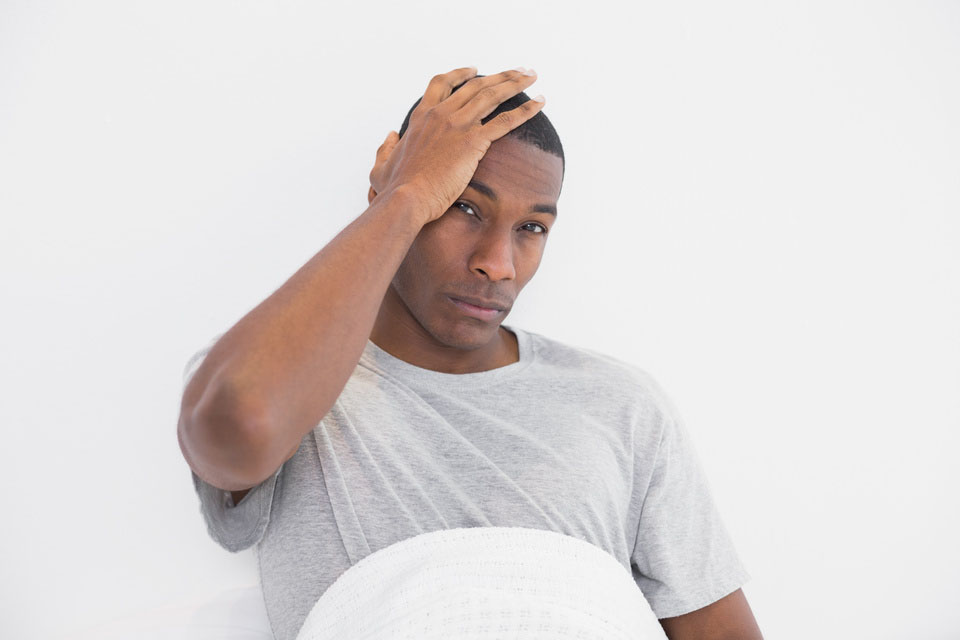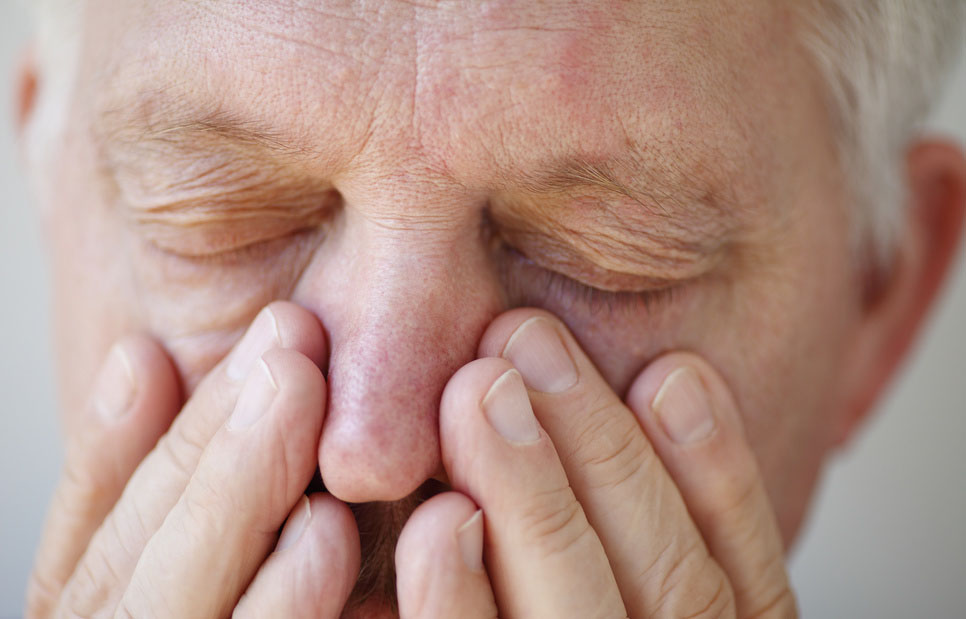Approximately 15-20% of the population will suffer from headaches at any given time. Headaches can range from mild to severe with symptoms varying wildly. It’s one of the top medical ailments for which people seek treatment, and tension headaches are the most common type of headache. Tension headaches are often related to tension in the muscles of the head, neck, and jaw and are frequently stress related. The actual physical cause is still not fully understood, but it’s likely linked to how the brain and nervous system perceives muscular pain and stress. The good news is that tension headaches are very treatable!

Tension headaches are categorized as either episodic (meaning that you experience less than 15 headaches per month) or chronic (meaning that you experience more than 15 per month). They are nearly as frequent in children and teens as adults. Women tend to experience them more often than men by nearly two to one.
Tension Headache Symptoms include:
- The pain tends to wax and wane in severity (sometimes, throbbing or pulsing occurs).
- The pain is often described as pressure like and is typically felt on both sides of your head.
- The pain typically impacts the whole head, but it may begin in the back of your head or above your eyebrows. It’s typically painful around the temple area of your head and/or back of your head and neck.
- Many describe the pain as a severe tightness (like a vise grip) around the forehead or like a cap or band-like sensation which encircles their skull.
- The pain tends to come on gradually. Even at maximum intensity, it isn’t typically incapacitating. (Most people are able to continue with their daily activities despite the pain.)
Potential Triggers for Tension Headaches include:
- Stress
- Anxiety
- Impaired sleep (fatigue)
- Low blood sugar from improper eating
- Hunger
- Eye strain
- Overexertion
- Muscle strains and pain
- Muscle tension
- Cervical dysfunction (cervicogenic)
- Poor posture
- Hormonal changes and/or menses
- Foods such as processed meats, gluten, red wine, and dairy
- Environmental factors such as poor air quality, certain smells, and different chemicals that are inhaled or applied topically on the body.
Treatment for Tension Headaches
In most cases, effective treatment needs to be multifactorial as there are likely multiple triggers causing the headache. In general, treatment needs to focus on both the prevention of the tension headache and methods of dealing with an active headache as both tend to interrelate.
Prevention for Tension Headaches:
To effectively manage (and ultimately, prevent) tension headaches, effective stress management and elimination of known triggers are primary treatment strategies.
- Stress management. Effective stress management should not be overlooked as an important treatment modality. There are many different methods to help you manage stress more effectively. Common methods include meditation, journaling, and yoga. You may also need to reconsider certain friendships and relationships in your life. The key to effectively managing stress is to find an enjoyable activity, and then stick with it. This is a process–a journey (not a destination).
- Eliminate food triggers. Many foods can trigger headaches. An effective management strategy will be to identify and then eliminate food triggers. We may not even be aware of how negatively certain foods affect us. If you choose to eliminate your trigger foods, you will be amazed about how well you start to feel in general. Common food triggers include: red wine, aged meats or cheese, dairy products, and gluten. Addressing food triggers is a critical step in treatment. I recommend that you take an IgG food sensitivity test. IgG is an immunoglobulin antibody found in the body. This test can help to determine if certain foods are causing your body to react in a negative way. Addressing any sensitivities and possible gut or gastrointestinal issues can be very helpful in treating both tension and migraine headaches. Please seek assistance from a functional medicine doctor who specializes in headaches and gastrointestinal issues if your symptoms are correlated with any food triggers.
- Eliminate caffeine. This can be very tough because caffeine tends to be helpful in reducing initial symptoms. Chronic caffeine use (particularly in headache suffers) is known to cause rebound headaches (another sub classification of headaches). Rebound headaches occur when the same substance that helps to reduce symptoms will also cause the next headache to happen. Eliminating caffeine initially is difficult as it may trigger another headache. However, long term elimination of caffeine from your diet can be very effective in preventing headaches. Just watch out for over the counter (OTC) medications that contain caffeine as an active ingredient.
- Focus on your posture. Poor posture is a bane of modern society. The most common example of poor posture is a forward head with rounded shoulders. This causes excessive muscular tension throughout the cervical spine, upper trapezius region, and mid-thoracic area. Over time, this also leads to muscle weakness in the cervical spine and upper thoracic area. Proper posture allows for the optimal alignment of your spine. Neurologically speaking, this allows for your muscles to down regulate by reducing tension. Poor posture is almost always associated with muscle knots and trigger points. My Top 8 Stretches to Eliminate Neck, Upper Back, and Shoulder Pain is a downloadable .pdf file with my recommended stretches and exercises to address posture. These simple exercises (with complete instructions and photos) will help you to improve poor posture and can be performed at home.
DOWNLOAD NOW: My Top 8 Stretches to Eliminate Neck, Upper Back, and Shoulder Pain
How to Treat when you’re experiencing a Tension Headache:
- Fix your posture. Poor posture is one of the most common causes of muscle spasming and pain. This is particularly true if you spend a good portion of your day sitting. If you’re already experiencing a headache or you feel like one might be starting, I highly recommend that you initiate my stretching protocol (as noted above).
- Massage. Many trigger points and muscle spasms will refer pain into the head (which causes the headache). It’s important to actively and physically address the muscle tension. This is the time to contact a masseuse, physical therapist, athletic trainer or friend who is skillful in body work and massage to relieve the area in spasm. The specific massage technique to use will vary according to your preference. Massage techniques range from a light relaxing massage to a deep tissue massage or utilization of acupressure points. This can also be an effective prevention strategy.
- Foam roller. The foam roller allows you to perform self-massage and tissue mobilization. The foam roller is a wonderful tool to prevent muscle cramping and spasms. Please refer to the following posts for more information: Foam Rolling For Rehabilitation and 5 Ways to Improve Range-Of-Motion. I highly recommend a foam roller to help aid in your recovery.
- Other self-mobilization tools. Many times, a friend or masseuse isn’t available to assist when you need the help the most. A foam roller cannot effective reach places in the upper back or arms, so other self-mobilization tools may be necessary. You can get creative and use a tennis ball or golf ball, but I like a specific tool called a Thera Cane Massager. This tool allows you to apply direct pressure to a spasming muscle. When held for a long enough period of time, the Thera Cane Massager will usually cause the muscle spasms to release and provide much needed pain relief!
- Magnesium. A deficiency in magnesium is often associated with headache symptoms. Most people are deficient in the amount of magnesium they consume on a regular basis. You can take Mag Glycinate in pill form or by eating foods higher in magnesium such as spinach, artichokes, and dates.
- Topical agents. Many topical agents can help to decrease and eliminate muscle spasms which can help to reduce headache pain. You can apply a small amount of the topical agent directly over the headache pain area if it’s accessible and not near your eyes. (Please use common sense.) You may find that one product works better than another. Some of my favorite products in my medicine cabinet include: Biofreeze Pain Relieving Gel; Arnica Rub (Arnica Montana, an herbal rub); and topical magnesium.
- Magnesium bath. The combination of warm water with magnesium is very soothing and relaxing. Magnesium is known to help decrease muscle pain and soreness. Options include: Epsoak Epson Salt or Ancient Minerals Magnesium Bath Flakes. I find that the magnesium flakes work better, but they are significantly more expensive than Epson salt.
- Acupuncture. I am personally a big fan of acupuncture. It is very useful in treating all kinds of medical conditions. It can be particularly effective in treating headaches, muscle trigger points, muscle cramps, spasms, and pain as it addresses the issues on multiple layers. Acupuncture directly stimulates the muscle by affecting the nervous system response to the muscle while producing a general sense of well-being and relaxation.
- Medications. Medications can be an effective short term solution to headache pain, but I strongly encourage you to transition off of medications over time. Many over the counter (OTC) medications contain caffeine which can lead to another type of headache called a rebound headache. This occurs when the medication wears off and triggers another one. This is common with medications such as Excedrin which contains caffeine. Other types of medications include acetaminophen, aspirin, Ibuprofen, and Naproxen. In some cases, prescription medications may be used initially to help you tolerate the pain as you work toward prevention. Please speak to your physician regarding prescription options.
- Speak with your Physical Therapist (PT) or Physician (MD). If you are suffering with headache and muscle tension/pain, there are options. Please speak to your medical provider to determine if other causes are contributing to the problem. Physical therapy is very good at assisting those suffering with these types of headaches. The American Physical Therapy Association (APTA) offers a wonderful resource to help find a physical therapist in your area. In most states, you can seek physical therapy advice without a medical doctor’s referral (although it may be a good idea to hear your physician’s opinion as well).
Tension headaches are a common and debilitating problem. Although this is not an exhaustive list of treatment options, it offers many different and effective methods for you to consider. In many cases, the techniques utilized to treat an active headache are also effective in prevention.
In nearly all cases, the frequency of tension headaches can be reduced and eliminated in general. The key is to acknowledge that you are not powerless when addressing this type of headache. However, there isn’t just one magic cure for the headache either. Effective treatment will likely be multifactorial. Begin by implementing one or two of the strategies, and then assess how well they worked for you. If the technique helped, continue with it and then implement another strategy. Create a plan with specific strategies for prevention in addition to knowing beforehand as to how you will treat an active headache. This will empower you to recognize that you have control and are not destined to have headaches forever.
Can you share any prevention tips or treatment techniques that have worked for you when dealing with a tension headache? Please leave your comments below.
If you have a question that you would like featured in an upcoming blog post, please comment below or submit your question to contact@thePhysicalTherapyAdvisor.com. Be sure to join our growing community on Facebook by liking The Physical Therapy Advisor!
Disclaimer: The Physical Therapy Advisor blog is for general informational purposes only and does not constitute the practice of medicine or other professional health care services, including the giving of medical advice. No health care provider/patient relationship is formed. The use of information on this blog or materials linked from this blog is at your own risk. The content of this blog is not intended to be a substitute for professional medical advice, diagnosis, or treatment. Do not disregard, or delay in obtaining, medical advice for any medical condition you may have. Please seek the assistance of your health care professionals for any such conditions.




